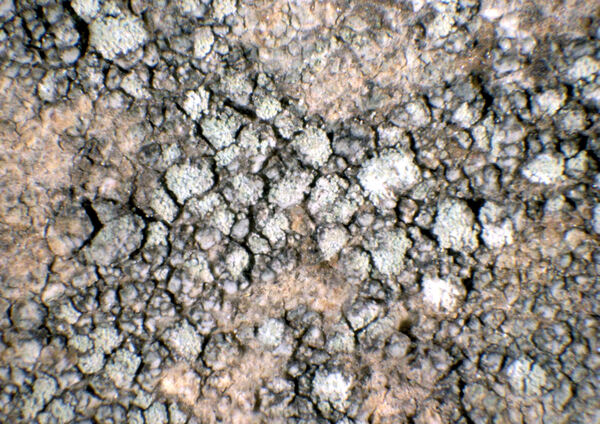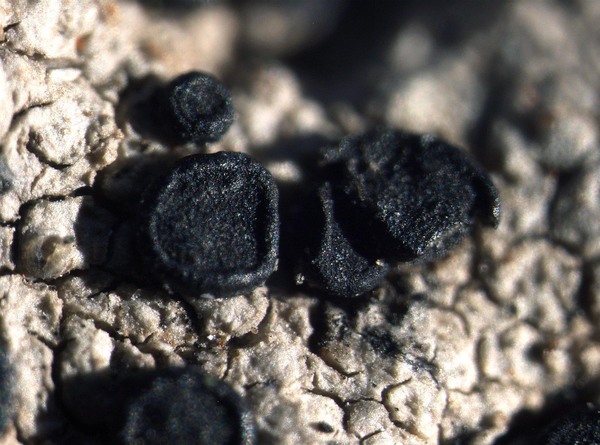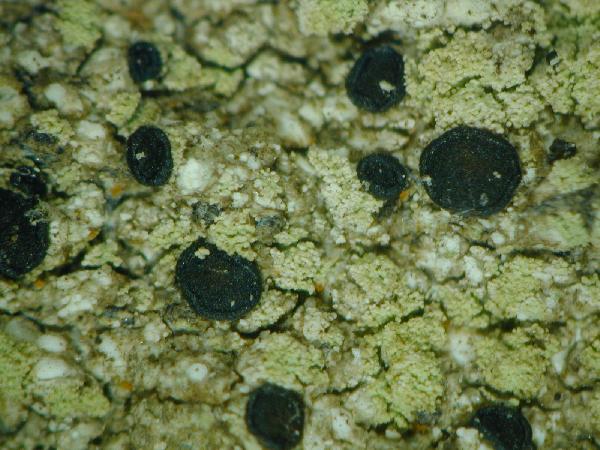Lecidella scabra (Taylor) Hertel & Leuckert
Willdenowia, 5: 375, 1969. Basionym: Lecidea scabra Taylor in Mackay - Fl. Hibern., 2: 121, 1836.
Synonyms: Lecidea continuior var. subviridans Nyl.; Lecidea elaeochroma var. pulverulenta Th. Fr.; Lecidea enterochlora Taylor; Lecidea prasinula (Wedd.) B. de Lesd.; Lecidea protrusa Fr.; Lecidella prasinula (Wedd.) Hertel nomen sed non planta; Lithographa larbalestieri Leight.
Distribution: N - VG, TAA (Knoph & al. 1997, Nascimbene & al. 2022), Lomb, Piem (TSB 33660), Emil (Knoph & al. 1997, Tretiach & al. 2008, Fariselli & al. 2020), Lig (TSB 33407). C - Tosc (Tretiach & Nimis 1994, Benesperi 2011), Laz, Abr, Sar (Monte 1993, Rizzi & al. 2011, Giordani & al. 2013). S - Camp (Nimis & Tretiach 2004), Cal (Puntillo & Puntillo 2004), Si (Ottonello & al. 2011).
Description: Thallus crustose, episubstratic, rimose to areolate, 0.1-0.3(-0.4) mm thick, greenish grey to grey-yellowish green, sorediate, the soredia granular, 20-30(-40) µm in diam., arranged in initially discrete and up to 1.2 mm wide, then often confluent, greenish to yellowish white soralia which appear grey-green when abraded. Cortex filled with crystals, patchily overlain by a 10-20 μm thick epinecral layer; medulla white, with crystals, I-. Apothecia rather rare, lecideine, dull black, slightly constricted at base, 0.7-1.6 mm across, with a flat to weakly convex disc and a thin proper margin. Proper exciple greenish black to dark brown in outer part, brown to reddish brown within, sometimes with crystals; epithecium bright green to blackish green, 10-20 μm high, K-, N-; hymenium colourless, 50-80 µm high, not inspersed with oil droplets; paraphyses easily made free in K, simple, rarely anastomosing or branched in upper part, 1-2 μm thick at mid-level, the apical cells 2-3 μm wide; hypothecium yellowish brown to brown. Asci 8-spored, clavate, with an intensely K/I+ blue tholus penetrated by a faintly amyloid, broadly cylindrical axial mass, and a poorly developed ocular chamber, the wall K/I-, surrounded by a K/I+ blue outer layer, approaching the Lecanora-type. Ascospores 1-celled, hyaline, broadly ellipsoid to ovoid, thick-walled, 10-15(-18) x 6-8(-10) µm. Photobiont chlorococcoid. Spot tests: thallus K+ yellow (rarely K-), C+ orange-yellow, KC+ orange, P+ yellow to rarely P-, UV+ orange. Chemistry: atranorin, chloroatranorin, 4,5-dichloro-3-O-methylnorlichexanthone, 4,5-dichloronorlichexanthone, arthothelin, asemone, thiophanic acid and thuringione.Note: a mainly temperate to Mediterranean lichen found on basic siliceous substrata wetted by rain in species-poor stands; quite common on brick in archaeological areas of Tyrrhenian Italy, but also present in the Alps, the species is chemically heterogeneous (see Knoph & Leuckert 1997). Albeit more rarely, the species can also grow on bark at the base of old deciduous trees.
Growth form: Crustose
Photobiont: green algae other than Trentepohlia
Reproductive strategy: mainly asexual, by soredia, or soredia-like structures (e.g. blastidia)
Most common in areas with a humid-warm climate (e.g. most of Tyrrenian Italy)
Commonnes-rarity: (info)
Alpine belt: absent
Subalpine belt: absent
Oromediterranean belt: absent
Montane belt: very rare
Submediterranean belt: very rare
Padanian area: extremely rare
Humid submediterranean belt: rather common
Humid mediterranean belt: rather rare
Dry mediterranean belt: absent
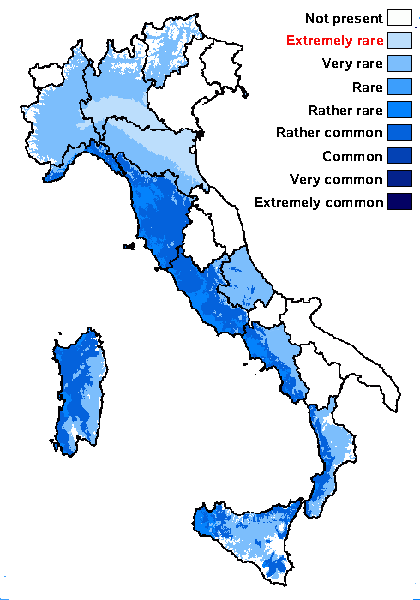
Predictive model
Herbarium samples
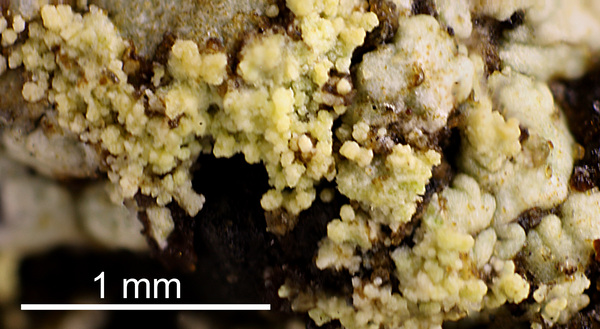

Felix Schumm – CC BY-SA 4.0
[14212], Portugal, Azoren, Terceira, Angra Do Heroismo, Fortaleza de Dao Joao Baptista, 38°39.171' N, 27°13.457' W, ca. 44 m. Leg. Aptroot & Schumm 17.07.2008, det. Aptroot


Felix Schumm – CC BY-SA 4.0
[14212], Portugal, Azoren, Terceira, Angra Do Heroismo, Fortaleza de Dao Joao Baptista, 38°39.171' N, 27°13.457' W, ca. 44 m. Leg. Aptroot & Schumm 17.07.2008, det. Aptroot


Felix Schumm – CC BY-SA 4.0
[14212], Portugal, Azoren, Terceira, Angra Do Heroismo, Fortaleza de Dao Joao Baptista, 38°39.171' N, 27°13.457' W, ca. 44 m. Leg. Aptroot & Schumm 17.07.2008, det. Aptroot


Felix Schumm – CC BY-SA 4.0
[14212], Portugal, Azoren, Terceira, Angra Do Heroismo, Fortaleza de Dao Joao Baptista, 38°39.171' N, 27°13.457' W, ca. 44 m. Leg. Aptroot & Schumm 17.07.2008, det. Aptroot


Felix Schumm – CC BY-SA 4.0
[14212], Portugal, Azoren, Terceira, Angra Do Heroismo, Fortaleza de Dao Joao Baptista, 38°39.171' N, 27°13.457' W, ca. 44 m. Leg. Aptroot & Schumm 17.07.2008, det. Aptroot
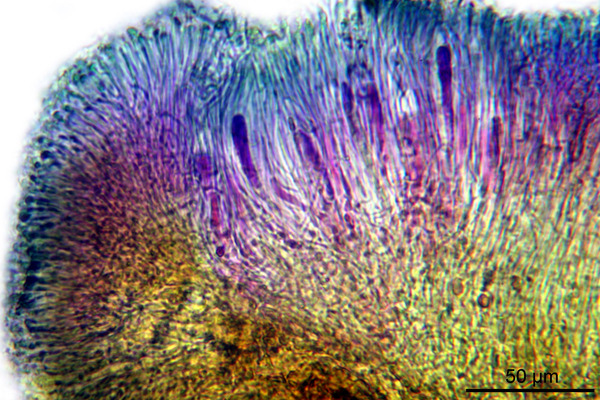

Felix Schumm – CC BY-SA 4.0
[14212], Portugal, Azoren, Terceira, Angra Do Heroismo, Fortaleza de Dao Joao Baptista, 38°39.171' N, 27°13.457' W, ca. 44 m. Leg. Aptroot & Schumm 17.07.2008, det. Aptroot
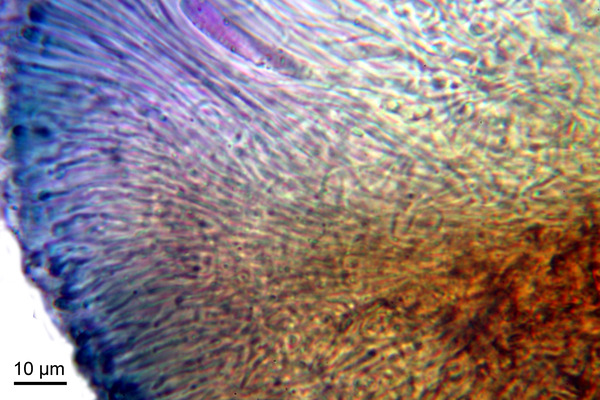

Felix Schumm – CC BY-SA 4.0
[14212], Portugal, Azoren, Terceira, Angra Do Heroismo, Fortaleza de Dao Joao Baptista, 38°39.171' N, 27°13.457' W, ca. 44 m. Leg. Aptroot & Schumm 17.07.2008, det. Aptroot
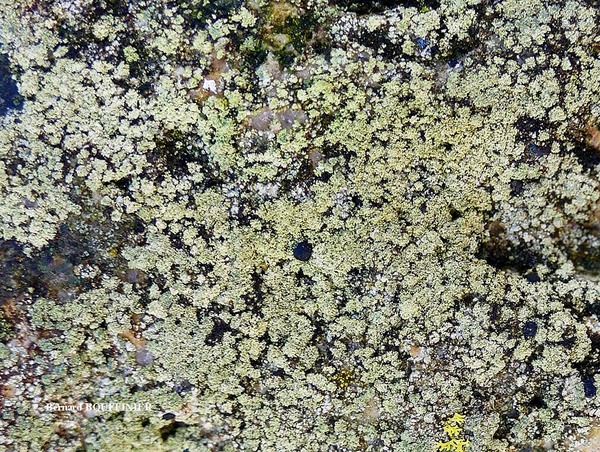
Bernard Bouffinier - Source: http://www.lichensmaritimes.org/index.php?task=fiche&lichen=233&lang=en
France
Crozon
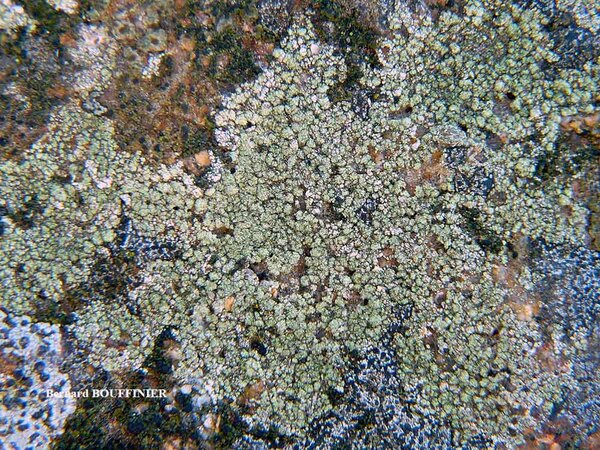
Bernard Bouffinier - Source: http://www.lichensmaritimes.org/index.php?task=fiche&lichen=233&lang=en
France
Pointe du Van
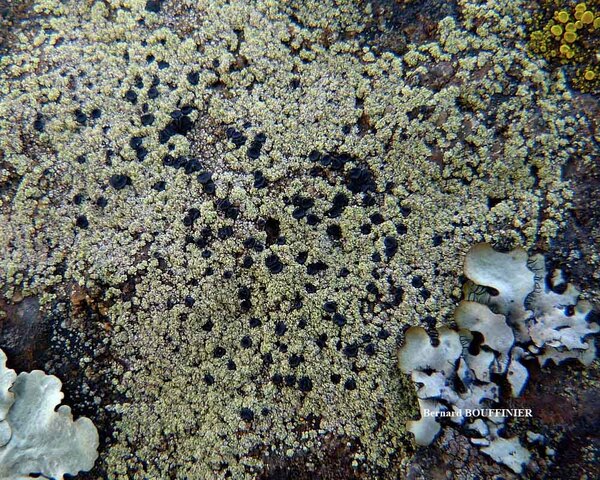
Bernard Bouffinier - Source: http://www.lichensmaritimes.org/index.php?task=fiche&lichen=233&lang=en
France
Le Fret

Bernard Bouffinier - Source: http://www.lichensmaritimes.org/index.php?task=fiche&lichen=233&lang=en
France
Le Fret
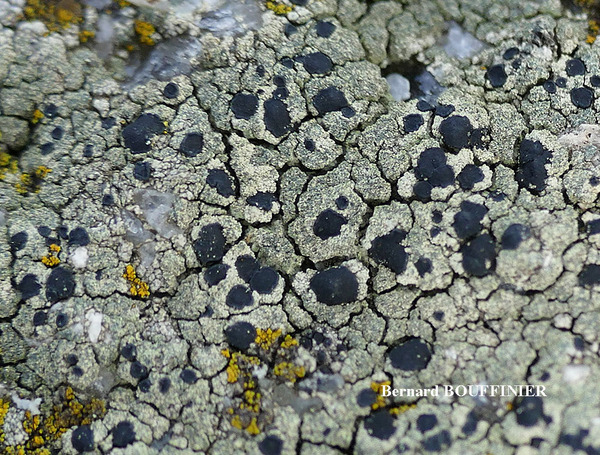
Bernard Bouffinier - Source: http://www.lichensmaritimes.org/index.php?task=fiche&lichen=233&lang=en
France, Plouarzel

Bernard Bouffinier - Source: http://www.lichensmaritimes.org/index.php?task=fiche&lichen=233&lang=en
France, Pointe du Raz
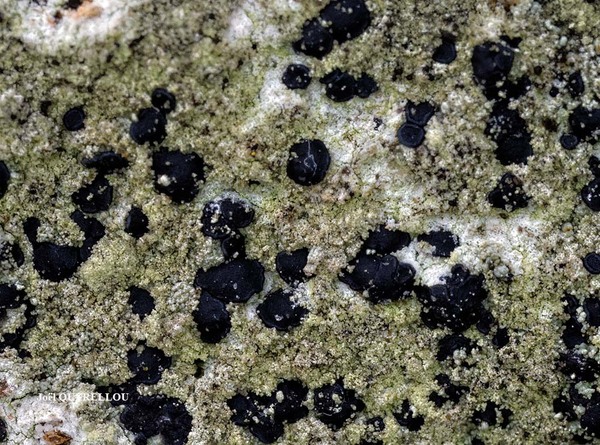
Joël Querellou - Source: http://www.lichensmaritimes.org/index.php?task=fiche&lichen=233&lang=en
France, Brest
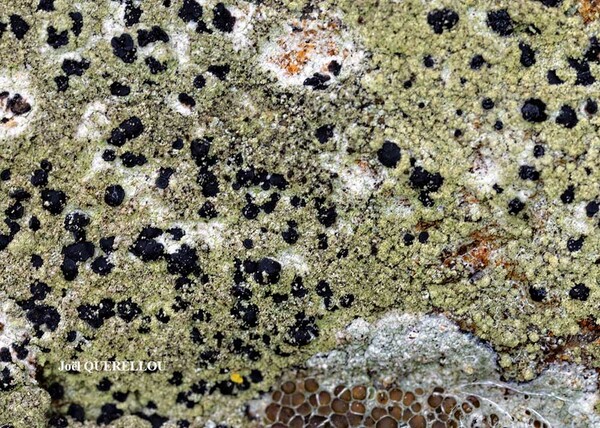
Joël Querellou - Source: http://www.lichensmaritimes.org/index.php?task=fiche&lichen=233&lang=en
France, Brest
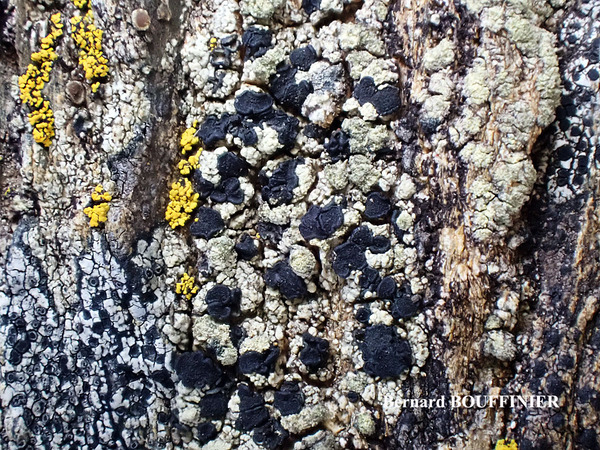
Bernard Bouffinier - Source: http://www.lichensmaritimes.org/index.php?task=fiche&lichen=1407&lang=en
France, Pointe de Dinan
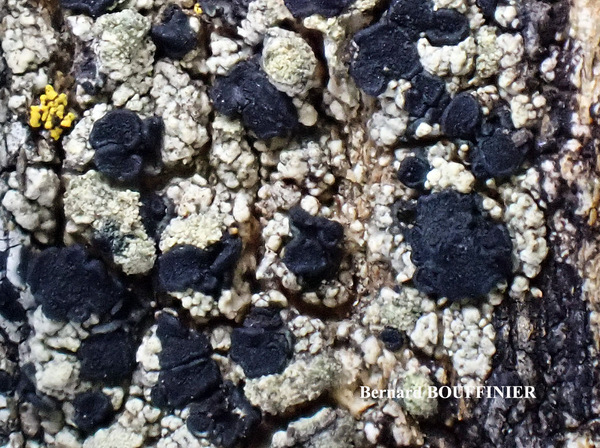
Bernard Bouffinier - Source: http://www.lichensmaritimes.org/index.php?task=fiche&lichen=1407&lang=en
France, Pointe de Dinan
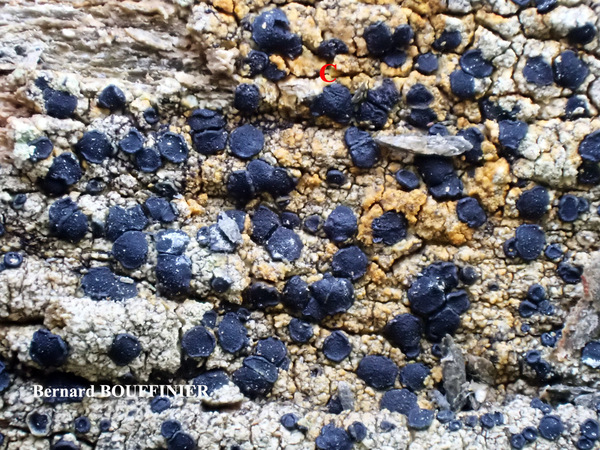
Bernard Bouffinier - Source: http://www.lichensmaritimes.org/index.php?task=fiche&lichen=1407&lang=en
France, Pointe de Dinan

Bernard Bouffinier - Source: http://www.lichensmaritimes.org/index.php?task=fiche&lichen=1407&lang=en
France, Pointe de Dinan
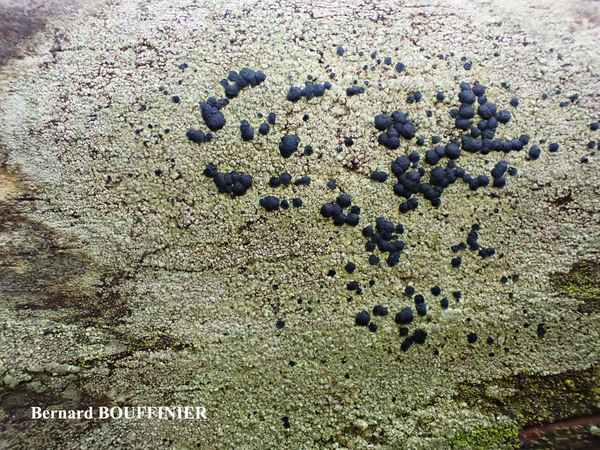
Bernard Bouffinier - Source: http://www.lichensmaritimes.org/index.php?task=fiche&lichen=1254&lang=en
France, Trégarvan
on wood
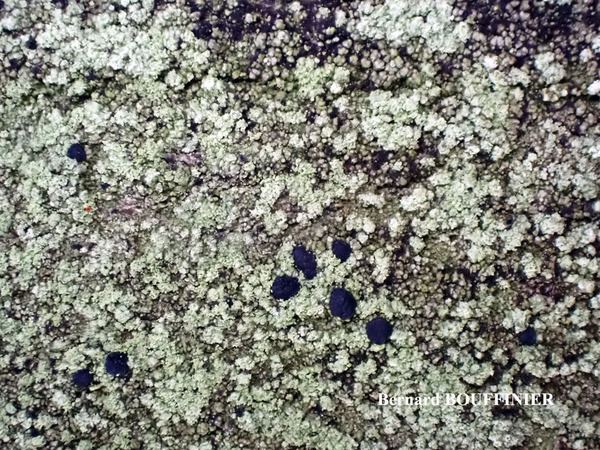
Bernard Bouffinier - Source: http://www.lichensmaritimes.org/index.php?task=fiche&lichen=1254&lang=en
France, Trégarvan
on wood
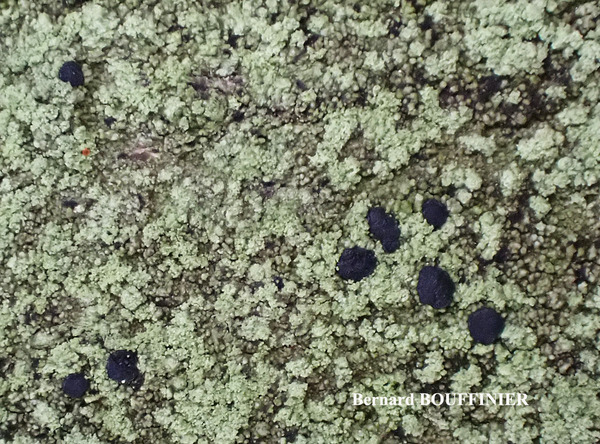
Bernard Bouffinier - Source: http://www.lichensmaritimes.org/index.php?task=fiche&lichen=1254&lang=en
France, Trégarvan
on wood
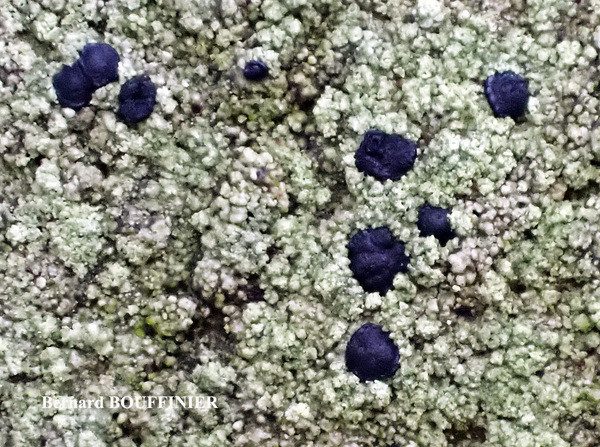
Bernard Bouffinier - Source: http://www.lichensmaritimes.org/index.php?task=fiche&lichen=1254&lang=en
France, Trégarvan
on wood
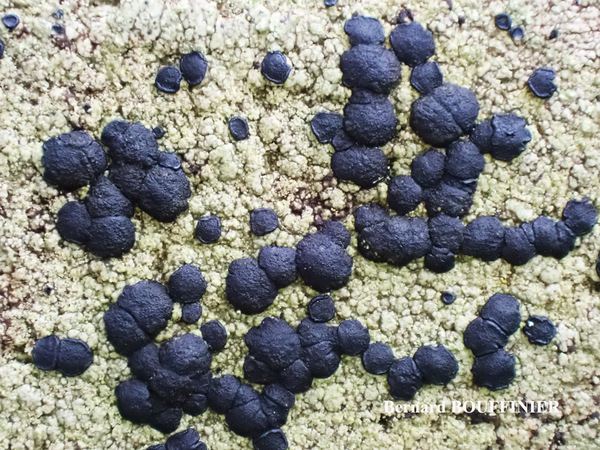
Bernard Bouffinier - Source: http://www.lichensmaritimes.org/index.php?task=fiche&lichen=1254&lang=en
France, Trégarvan
on wood
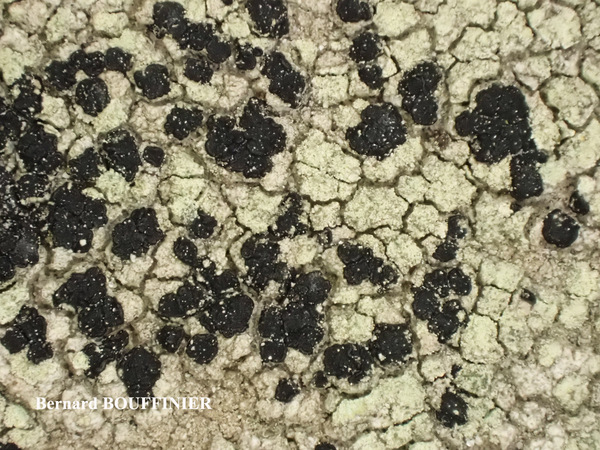
Bernard Bouffinier - Source: http://www.lichensmaritimes.org/index.php?task=fiche&lichen=1243&lang=en
France, Sillon de Talbert
on soil-protecting textile

Bernard Bouffinier - Source: http://www.lichensmaritimes.org/index.php?task=fiche&lichen=1243&lang=en
France, Sillon de Talbert
on soil-protecting textile
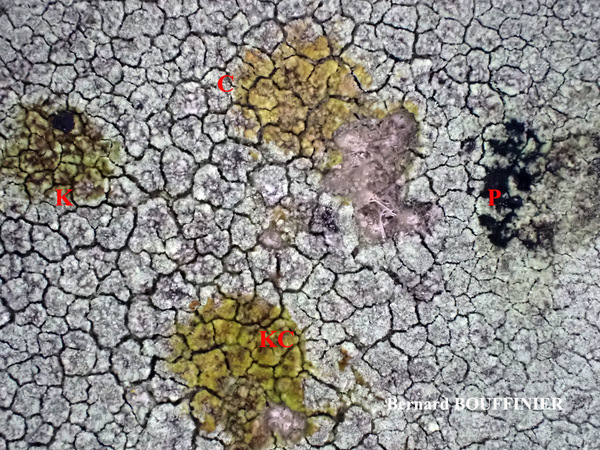
Bernard Bouffinier - Source: http://www.lichensmaritimes.org/index.php?task=fiche&lichen=1243&lang=en
France, Sillon de Talbert
on soil-protecting textile

Jacques Haine - Source: http://www.lichensmaritimes.org/index.php?task=fiche&lichen=1243&lang=en
France, Sillon de Talbert
on soil-protecting textile
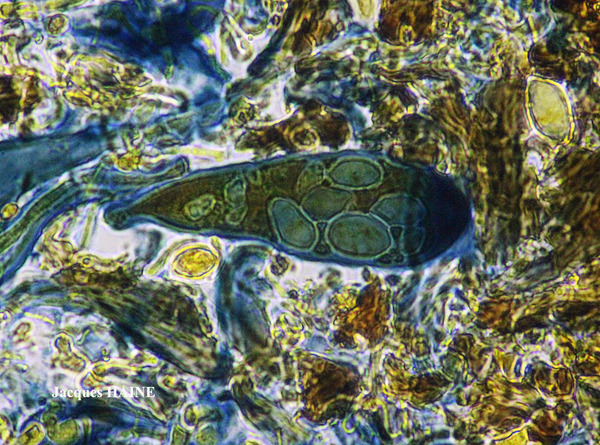
Jacques Haine - Source: http://www.lichensmaritimes.org/index.php?task=fiche&lichen=1243&lang=en
France, Sillon de Talbert
on soil-protecting textile
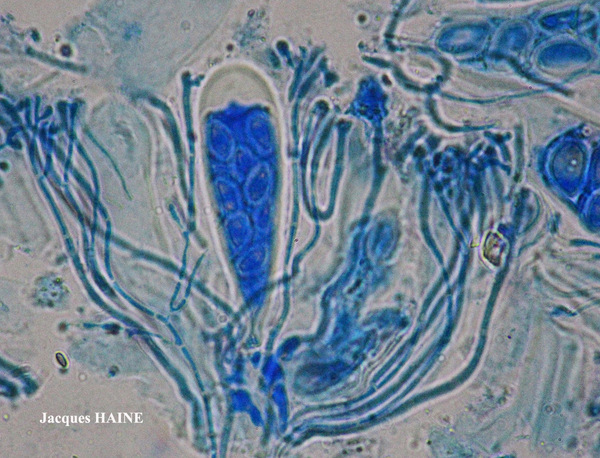
Jacques Haine - Source: http://www.lichensmaritimes.org/index.php?task=fiche&lichen=1243&lang=en
France, Sillon de Talbert
on soil-protecting textile
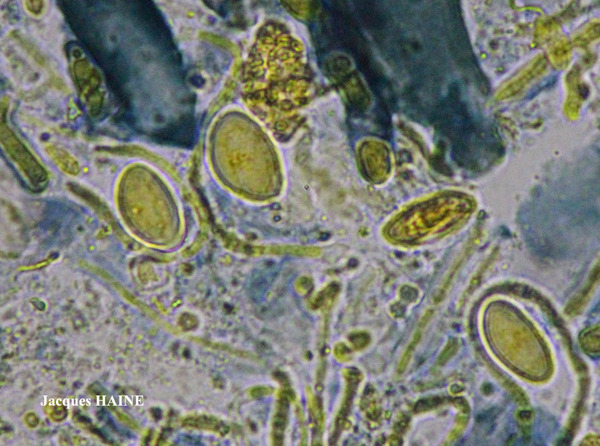
Jacques Haine - Source: http://www.lichensmaritimes.org/index.php?task=fiche&lichen=1243&lang=en
France, Sillon de Talbert
on soil-protecting textile
Growth form: Crustose
Photobiont: green algae other than Trentepohlia
Reproductive strategy: mainly asexual, by soredia, or soredia-like structures (e.g. blastidia)
Most common in areas with a humid-warm climate (e.g. most of Tyrrenian Italy)
Commonnes-rarity: (info)
Alpine belt: absent
Subalpine belt: absent
Oromediterranean belt: absent
Montane belt: very rare
Submediterranean belt: very rare
Padanian area: extremely rare
Humid submediterranean belt: rather common
Humid mediterranean belt: rather rare
Dry mediterranean belt: absent

Predictive model
| Herbarium samples |


Felix Schumm – CC BY-SA 4.0
[14212], Portugal, Azoren, Terceira, Angra Do Heroismo, Fortaleza de Dao Joao Baptista, 38°39.171' N, 27°13.457' W, ca. 44 m. Leg. Aptroot & Schumm 17.07.2008, det. Aptroot


Felix Schumm – CC BY-SA 4.0
[14212], Portugal, Azoren, Terceira, Angra Do Heroismo, Fortaleza de Dao Joao Baptista, 38°39.171' N, 27°13.457' W, ca. 44 m. Leg. Aptroot & Schumm 17.07.2008, det. Aptroot


Felix Schumm – CC BY-SA 4.0
[14212], Portugal, Azoren, Terceira, Angra Do Heroismo, Fortaleza de Dao Joao Baptista, 38°39.171' N, 27°13.457' W, ca. 44 m. Leg. Aptroot & Schumm 17.07.2008, det. Aptroot


Felix Schumm – CC BY-SA 4.0
[14212], Portugal, Azoren, Terceira, Angra Do Heroismo, Fortaleza de Dao Joao Baptista, 38°39.171' N, 27°13.457' W, ca. 44 m. Leg. Aptroot & Schumm 17.07.2008, det. Aptroot


Felix Schumm – CC BY-SA 4.0
[14212], Portugal, Azoren, Terceira, Angra Do Heroismo, Fortaleza de Dao Joao Baptista, 38°39.171' N, 27°13.457' W, ca. 44 m. Leg. Aptroot & Schumm 17.07.2008, det. Aptroot


Felix Schumm – CC BY-SA 4.0
[14212], Portugal, Azoren, Terceira, Angra Do Heroismo, Fortaleza de Dao Joao Baptista, 38°39.171' N, 27°13.457' W, ca. 44 m. Leg. Aptroot & Schumm 17.07.2008, det. Aptroot


Felix Schumm – CC BY-SA 4.0
[14212], Portugal, Azoren, Terceira, Angra Do Heroismo, Fortaleza de Dao Joao Baptista, 38°39.171' N, 27°13.457' W, ca. 44 m. Leg. Aptroot & Schumm 17.07.2008, det. Aptroot

Bernard Bouffinier - Source: http://www.lichensmaritimes.org/index.php?task=fiche&lichen=233&lang=en
France
Crozon

Bernard Bouffinier - Source: http://www.lichensmaritimes.org/index.php?task=fiche&lichen=233&lang=en
France
Pointe du Van

Bernard Bouffinier - Source: http://www.lichensmaritimes.org/index.php?task=fiche&lichen=233&lang=en
France
Le Fret

Bernard Bouffinier - Source: http://www.lichensmaritimes.org/index.php?task=fiche&lichen=233&lang=en
France
Le Fret

Bernard Bouffinier - Source: http://www.lichensmaritimes.org/index.php?task=fiche&lichen=233&lang=en
France, Plouarzel

Bernard Bouffinier - Source: http://www.lichensmaritimes.org/index.php?task=fiche&lichen=233&lang=en
France, Pointe du Raz

Joël Querellou - Source: http://www.lichensmaritimes.org/index.php?task=fiche&lichen=233&lang=en
France, Brest

Joël Querellou - Source: http://www.lichensmaritimes.org/index.php?task=fiche&lichen=233&lang=en
France, Brest

Bernard Bouffinier - Source: http://www.lichensmaritimes.org/index.php?task=fiche&lichen=1407&lang=en
France, Pointe de Dinan

Bernard Bouffinier - Source: http://www.lichensmaritimes.org/index.php?task=fiche&lichen=1407&lang=en
France, Pointe de Dinan

Bernard Bouffinier - Source: http://www.lichensmaritimes.org/index.php?task=fiche&lichen=1407&lang=en
France, Pointe de Dinan

Bernard Bouffinier - Source: http://www.lichensmaritimes.org/index.php?task=fiche&lichen=1407&lang=en
France, Pointe de Dinan

Bernard Bouffinier - Source: http://www.lichensmaritimes.org/index.php?task=fiche&lichen=1254&lang=en
France, Trégarvan
on wood

Bernard Bouffinier - Source: http://www.lichensmaritimes.org/index.php?task=fiche&lichen=1254&lang=en
France, Trégarvan
on wood

Bernard Bouffinier - Source: http://www.lichensmaritimes.org/index.php?task=fiche&lichen=1254&lang=en
France, Trégarvan
on wood

Bernard Bouffinier - Source: http://www.lichensmaritimes.org/index.php?task=fiche&lichen=1254&lang=en
France, Trégarvan
on wood

Bernard Bouffinier - Source: http://www.lichensmaritimes.org/index.php?task=fiche&lichen=1254&lang=en
France, Trégarvan
on wood

Bernard Bouffinier - Source: http://www.lichensmaritimes.org/index.php?task=fiche&lichen=1243&lang=en
France, Sillon de Talbert
on soil-protecting textile

Bernard Bouffinier - Source: http://www.lichensmaritimes.org/index.php?task=fiche&lichen=1243&lang=en
France, Sillon de Talbert
on soil-protecting textile

Bernard Bouffinier - Source: http://www.lichensmaritimes.org/index.php?task=fiche&lichen=1243&lang=en
France, Sillon de Talbert
on soil-protecting textile

Jacques Haine - Source: http://www.lichensmaritimes.org/index.php?task=fiche&lichen=1243&lang=en
France, Sillon de Talbert
on soil-protecting textile

Jacques Haine - Source: http://www.lichensmaritimes.org/index.php?task=fiche&lichen=1243&lang=en
France, Sillon de Talbert
on soil-protecting textile

Jacques Haine - Source: http://www.lichensmaritimes.org/index.php?task=fiche&lichen=1243&lang=en
France, Sillon de Talbert
on soil-protecting textile

 INDEX FUNGORUM
INDEX FUNGORUM
 GBIF
GBIF
 DOLICHENS
DOLICHENS
